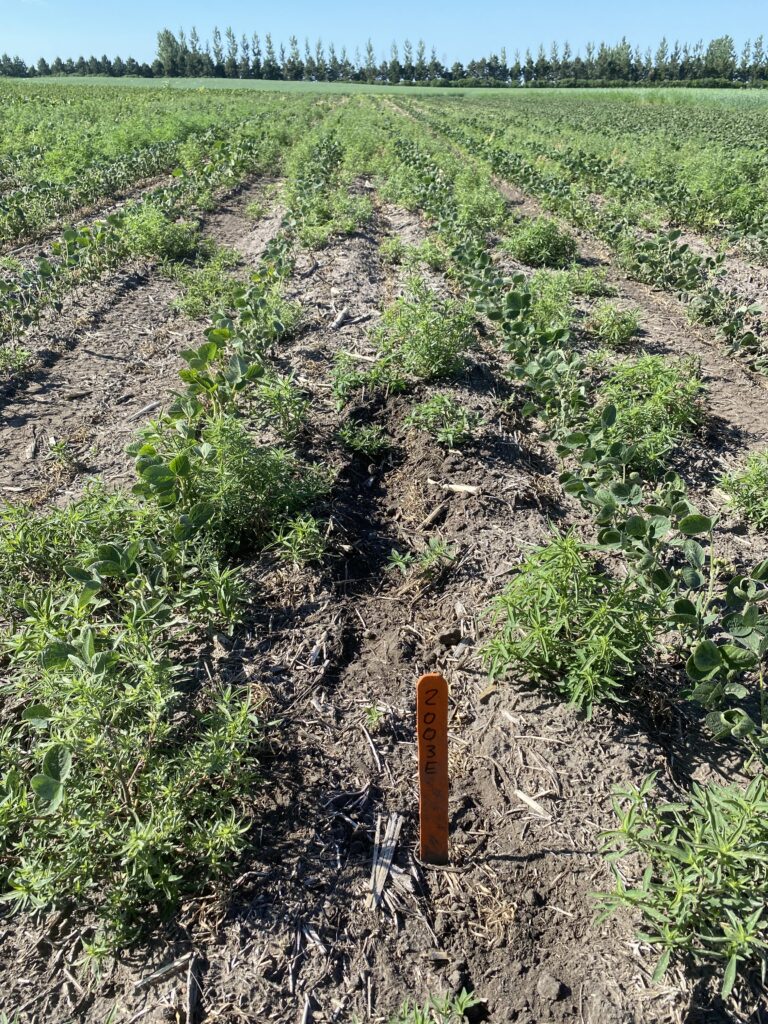Weeding Out the Problem: How to Control Late-Season Weeds in Soybeans and Other Crops

What Are Those “Christmas Trees” in My Field?
Late-season weeds — sometimes called “Christmas trees” for their tall, branchy shape — are a frustrating sight before harvest. Even if they don’t slash this year’s yields, they spread seed and create bigger problems next season.
In this article, we’ll cover:
- Why late-season weeds appear
- How they affect yield and seedbanks
- Prevention and control strategies for future seasons
 Why Late-Season Weeds Show Up (Even If You Sprayed)
Why Late-Season Weeds Show Up (Even If You Sprayed)
You can follow every agronomic best practice — a solid pre-emerge program, planting into clean fields, and timely post-emerge sprays — and still see weeds in the combine.
This happens across all trait platforms, but the problem can be worse when herbicide options are limited. Dry edible beans and conventional soybeans often struggle more than traited beans.
Key Factors Driving Late-Season Weed Pressure
- Late or No Row Closure
When the canopy doesn’t close quickly, sunlight reaches the soil surface, allowing weeds to germinate later in the season. - Herbicide Wear-Off
Pre-emerge herbicides can lose effectiveness before the crop fully shades the ground — especially on sandy soils or marginal land where kochia and foxtail barley thrive. - Wet Planting Conditions
Beans planted into saturated soils (“mudded in”) often have poor early stands, giving weeds a head start. - Weather Damage to the Canopy
Hail, wind, and heavy storms can reopen the canopy mid-season, creating gaps where new weed flushes can establish.
Do Late-Season Weeds Affect Yield?
In many cases, heavy late weed flushes don’t drastically impact yield, especially in already thin or stressed areas. The bigger issue is seedbank buildup.
Weeds going to seed before harvest add thousands of seeds to the soil. Running them through the combine also helps spread those seeds across the field, setting you up for more weed pressure next year.
Is Preharvest Spraying Worth It?
Preharvest herbicide treatments can help — but think of them as harvest aids, not complete solutions.
By late season, weeds are often as mature as the crop and have already produced viable seed. While certain species like cocklebur may lose some seed viability from late spraying, most won’t — meaning control efforts must focus on preventing these escapes in the first place.
Long-Term Weed Control Strategies
With no new herbicide traits or active ingredients on the immediate horizon, integrated weed management is critical. Consider these steps:
- Burndown applications before planting to eliminate early competition
- Effective pre-emerge programs with long-lasting residual control
- Timely post-emerge passes before weeds exceed label height limits
- Rotate herbicide chemistries to prevent resistance
- Rotate crops — even when commodity prices push you toward continuous planting of the same crop

Late emergers like this have become a major source of seed.
Final Takeaway
Late-season weeds may not tank this year’s yields, but they’re planting seeds for next year’s problems. A proactive, multi-year strategy is the best way to keep fields clean and protect future profitability.

 Why Late-Season Weeds Show Up (Even If You Sprayed)
Why Late-Season Weeds Show Up (Even If You Sprayed)









